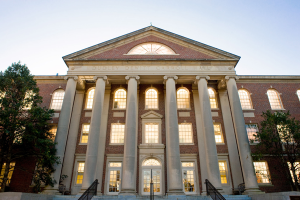Being Human: Retrospective exhibit of Life magazine photographer’s work on display in Carroll Hall

 A photography exhibit at the UNC Hussman School of Journalism and Media features portraits of Marilyn Monroe, Pablo Picasso, Ernest Hemingway, Elizabeth Taylor and Robert Frost.
A photography exhibit at the UNC Hussman School of Journalism and Media features portraits of Marilyn Monroe, Pablo Picasso, Ernest Hemingway, Elizabeth Taylor and Robert Frost.
The portraits are part of the “Being Human” exhibit of 81 photos by former Life magazine photographer, Ken Heyman, that is on display at the journalism school on the UNC campus through Dec. 20. The free, public exhibit is organized by the school’s Park Library and displayed on Carroll Hall’s first and second floors.
Heyman shot more than 150 assignments for Life, authored 54 books, and was a founding member of the International Center for Photography. He collaborated for more than 20 years with anthropologist Margaret Mead, traveling to more than 60 countries and co-authoring two books with her, including the Pulitzer Prize-nominated “Family” in 1965.
“Not everyone will know Heyman’s name, but they are likely to recognize his work,” said Jean Folkerts, dean of the school. “Heyman created iconic images, and through them he told important stories. I’m glad we can share those stories with all who visit the school.”
The retrospective exhibit, which comes to the journalism school from CEPA Gallery in Buffalo, N.Y., with support from the National Endowment for the Arts and the Robert Mapplethorpe Foundation, celebrates Heyman’s vision and presents selections from his early journalistic and anthropological work. It has received enthusiastic response and critical acclaim for Heyman’s ability to interpret sensitively the human condition.
“I hope the exhibit informs and inspires our students,” said the Park Library’s Megan Garrett, who is curating the exhibit for the school. “The photographs cover a wide range of events and emotions. People are captivated by the images, and it shows on the faces of the students, faculty, staff and visitors who see the exhibit.”
The photographs are divided into four subject sections – “Best of Ken,” “Portraits,” “Color Hip Shots” and “Willie.” Heyman’s captions are included with each photo.
“Best of Ken,” a collection of 32 prints displayed on the first floor of Carroll Hall, features a variety of subjects from around the world including collaborative work with Margaret Mead and significant events such as President John F. Kennedy’s funeral.
The 20 photos in the “Portraits” section that are displayed in and around the Park Library on the second floor of Carroll Hall range from obscure subjects, such as a homeless man and Heyman’s father, to some of the most recognized faces in popular culture, such as Mother Teresa and Charlie Chaplin. “Libraries are generally so text-based that it’s a lovely diversion for Park Library visitors to experience Heyman’s beautiful photographs,” said Stephanie Willen Brown, the library’s director.
“Color Hip Shots” on Carroll Hall’s second floor showcases a technique Heyman began using in the 1980s in which he held an automatic focus camera with a fixed, wide-angle lens at hip level.
“Willie” is a collection of 14 images from Heyman’s month documenting the life of four-year-old Willie, a prostitute’s son in New York’s Hell’s Kitchen neighborhood. The images show a strong bond between photographer and subject, and they emphasize the theme of the exhibit – being human. “Willie” is located on the first floor of Carroll Hall opposite “Best of Ken.”
“CEPA Gallery is thrilled to kick off its tour of “Ken Heyman: Being Human” at the UNC Hussman School of Journalism and Media,” said Sean Donaher, CEPA’s executive director. “The school’s nationwide reputation for both academic excellence and community involvement make it a perfect partner in CEPA’s effort to expose a large and diverse audience to the work of this brilliant photographer.“
Heyman’s work has been shown previously at CEPA Gallery, the Albright-Knox Art Gallery, the Museum of Modern Art, Hallmark Gallery, International Center for Photography, Zabriskie Gallery and American Museum of Natural History, among other locations.